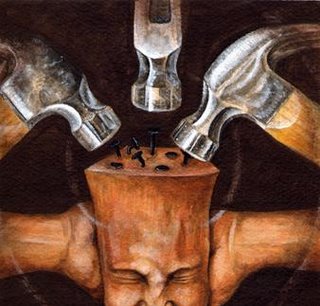The pain of cluster headaches is markedly greater than in other headache conditions, including severe migraines, and experts believe that it may be the most severe pain known to medical science. It has been described by female patients as being more severe than childbirth.
[3] Dr. Peter Goadsby, Professor of Clinical Neurology at University College London, a leading researcher on the condition has commented, “Cluster headache is probably the worst pain that humans experience. I know that’s quite a strong remark to make, but if you ask a cluster headache patient if they’ve had a worse experience, they’ll universally say they haven’t. Women with cluster headache will tell you that an attack is worse than giving birth.
So you can imagine that these people give birth without anesthetic once or twice a day, for six, eight or ten weeks at a time, and then have a break. It’s just awful.”
[2] The pain is lancinating or boring in quality, and is located behind the eye (periorbital) or in the temple, sometimes radiating to the neck or shoulder.
Analogies frequently used to describe the pain are a red-hot poker inserted into the eye, or a spike penetrating from the top of the head, behind one eye, radiating down to the neck, or sometimes having a leg amputated without any anaesthetic. The condition was originally named Horton's Neuralgia after Dr. B.T Horton, who postulated the first theory as to their pathogenesis.
His original paper describes the severity of the headaches as being able to take normal men and force them to commit suicide. Indeed, cluster headaches are also known by the nickname "suicide headaches".
From Horton's 1939 original paper on cluster headache:
Our patients were disabled by the disorder and suffered from bouts of pain from two to twenty times a week. They had found no relief from the usual methods of treatment. Their pain was so severe that several of them had to be constantly watched for fear of suicide. Most of them were willing to submit to any operation which might bring relief.






